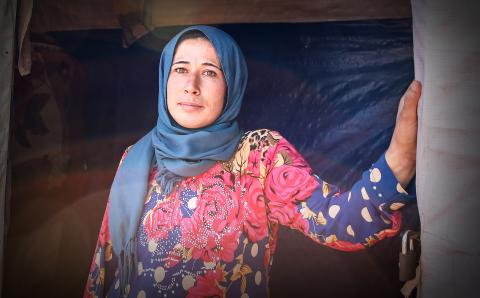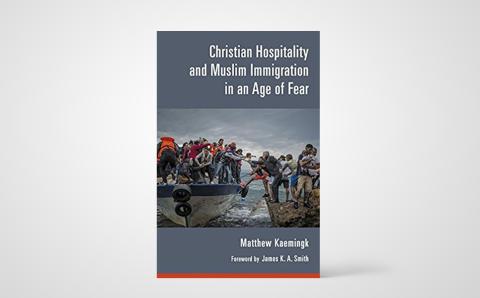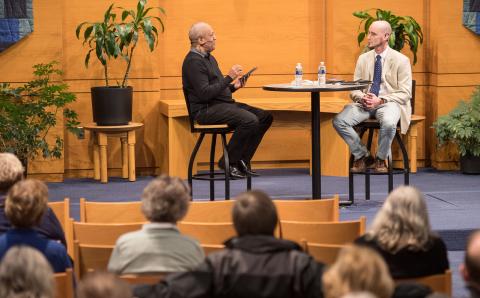Last October, actress Alyssa Milano suggested, “If all the women who have been sexually harassed or assaulted wrote ‘me too’ as a [social media] status, we might give people a sense of the magnitude of the problem.” While the hashtag may be relatively recent, the movement itself began 10 years ago with activist Tarana Burke. Her work sought to unite and give voice to survivors of sexual abuse—particularly survivors who are women of color. To date, the #MeToo hashtag has been tweeted over 2 million times in more than 85 countries. Time named the “Silence Breakers” of this movement its 2017 “Person of the Year.” Many are calling this rapidly growing social movement a reckoning as Hollywood figures, newscasters, and politicians stand on trial.
The issue of sexual abuse is as vast as it is near. Many have seen #MeToo typed out by a coworker, a peer, a friend, or a family member. Many have typed out these words themselves. People of all genders, races, ethnicities, abilities, ages, and religions have been impacted by sexual violence. Particularly upsetting for Christians are stories of sexual abuse that happened in the church by leaders and fellow worshipers—many captured under the hashtag #ChurchToo. There is both heaviness and hope in the movement and a need for faithful action.
Survivors are watching to see how their congregations respond. Parents are wondering how to teach their young children sexual-abuse prevention. Young adults are finding their education on sexuality lacking. Men are asking how they can be allies. Recently I heard this response: “We [the church] know how to respond to illness. To death. We bring meals. We write cards. We attend a service. But what is the appropriate response to sexual abuse? How can the church respond?” What many are seeing more clearly is the need for the church to address sexual violence and to care well for survivors in the body of Christ.
Sexual Violence
“Do not be daunted by the enormity of the world’s grief. Do justly now. Love mercy now. Walk humbly now. You are not obligated to complete the work, but neither are you free to abandon it.” —from the Pirkei Avot
The #MeToo movement began in response to sexual harassment but has brought awareness to a variety of issues under the umbrella of sexual violence. Sexual violence encompasses crimes such as sexual abuse, sexual assault, and rape. It includes intimate partner sexual violence, incest, and sexual harassment. These issues are enmeshed with misogyny, sexism, and the glorification of power and violence. Conversations have been stirred on how these social dynamics have provided a foundation for the evil of sexual violence both outside and inside the church.
Sexual violence in all forms is an abuse of power. It attacks the dignity and worth of God’s created ones, and it breaks relationship. It is a far cry from the example given by Jesus Christ, who surrendered power to have a loving, self-sacrificing relationship with us. Jesus is the example we have, and when we see its opposite, the church has a responsibility to cry foul. God is not the author of this evil, but God does enter the suffering, and we are called to follow. We are called to take actions that communicate to those in our pews who have bravely typed #MeToo—and to the many more who have exercised their choice not to—that we see you, we hear you, and we will respond. Such actions will equip the body to respond as followers of Christ.
Become a Safer Church
A primary need for victim-survivors is safety. The Christian Reformed Church Safe Church Ministry was created by Synod 1994 in order to (1) equip the church in creating safety by raising awareness and providing education; (2) offer support for those affected by sexual abuse; and (3) respond in cases of reported abuse by a church leader. Raising awareness can be as simple as offering an acknowledgement in response to movements like #MeToo. Consider the following from a liturgy from the website Strong Women Write (strongwomenwrite.wordpress.com):
We pause this day to recognize there are many among us who have been wounded by violence, exploitation, coercion, or manipulation. There are many among us who are suffering and grieving. There are many who need support and healing, who need their voices heard, and their stories acknowledged, and their experiences validated. The weight of oppression is heavy, and the effects of trauma are real and long-lasting. We pause this day to recognize that all of us are affected by this culture of violence.
Awareness and education are essential, and every effort should be made to protect people who are most vulnerable in our churches. Each year, I teach my daughter’s Sunday school class about abuse prevention through Circle of Grace, a program supported by Safe Church Ministry. My first-grade daughter and her peers are learning that God is always with them and that God cares for their well-being. They are learning what safe and unsafe secrets are, how to identify trusted adults, and how to ask for help. This education is meant to be built upon at each grade level and continued into young adult ministries.
I have heard from young adults that what they have learned from their church about sexuality is insufficient. There is a need to teach what healthy and unhealthy relationships look like, about intimacy and sex. The church can and should address related issues such as the glorification of power and violence, pornography, the objectification of others, and how these affect the way we relate to each other.
As a church becomes safer, survivors will disclose their stories, and we are responsible to respond. This is especially true if the suspected abuse involves a minor or if the perpetrator is a church leader. Safe and clear paths for reporting are necessary for becoming a safer church. Policies and procedures should be in place, and the congregation should be aware of these. The church should also be ready with resources for additional support, such as local domestic violence and sexual-assault response organizations that can provide crisis care, shelter, medical attention, and referrals for professional counselors. Congregations can highlight these resources throughout the ministry year and link to them on church websites. Many churches place resources in restrooms where individuals feel safe to read them.
Each classis should consider establishing a safe-church team with a representative from each church. Safe Church Ministry equips team members to be a resource within their congregations by offering educational materials, policy development assistance, and consultation. Having these teams in place communicates to survivors that the church cares for them and makes congregations active participants in the effort to end sexual violence.
Break the Silence
Looking at evil within or around us is not easy. The truth is that we have often looked away. But see and speak we must. Breaking the silence may very well begin with the church repenting of the ways it has participated in the sin of sexual violence and its sometimes hurtful or absent response. Breaking the silence means speaking about sexual violence in all its forms from the pulpit, in prayer, and in our times of study. It means giving survivors a voice in the church. And it means that when those survivors choose to share their stories, we must listen and believe them. There is almost nothing more valuable than a nonjudgmental, listening ear to someone who has suffered abuse.
The terms and definitions for sexual abuse and trauma are many; therefore, allow individuals to use their own words to tell their own story. Even the use of “victim” or “survivor” is a personal choice, and in the context of sexual violence you may hear both. Remember, as a listener your role is to be supportive. Leave “why” questions and investigations to those who have been specially trained for that role. There is no shortage of people who will judge and shame survivors of sexual violence. Listening affirms their value and their experience. It begins to build relationship—the very thing broken by abuse. The church also can make physical space for survivors to join together in a support group. Faith-based resources are available to lead such a group (including Safe Church’s Bathsheba: Come to the Water). Support groups offer the regular and often needed reminder that “I am not alone.”
Bear with One Another
“Action with and for those who suffer is the concrete expression of the compassionate life and the final criterion of being a Christian.”
—Henri J.M. Nouwen, Compassion: A Reflection on the Christian Life
Compassion is a Latin word meaning “to suffer with.” Survivors desire a community in which they can be cared for in the short- and long-term sufferings they face. While not all experiences result in trauma, many leave behind emotional, psychological, and physical effects. These may include depression, anxiety, flashbacks, nightmares, feelings of shame, and an inability to function and engage in life as the person once did. Psychologist Bessel van der Kolk describes it this way: “Trauma is not the story of something that happened back then. It’s the current imprint of that pain and fear living inside people” (The Body Keeps the Score). Trauma is not a moment; it is an unfolding. Becoming a trauma-informed church is one way to support those affected. Consider leading a book study on the topic with a selection such as Trauma and Grace: Theology in a Ruptured World by Serene Jones, or Healing the Wounds of Trauma: How the Church Can Help. Or have a local expert train church leaders. A church that understands trauma will inform the congregation ahead of time that they are going to speak on sexual violence, knowing that survivors may need time to consider how to care for themselves during such a message.
The victim-survivors in the body of Christ are on a journey. Each is unique in his or her place and needs. While the church should be ready with resources to meet these needs, it must also be patient, allowing individuals to decide which steps to take and when. People who have been sexually abused have lost their sense of control, and the ability to make choices is part of the path to healing. Be mindful of a tendency to rush toward forgiveness and grace. These are central and needed messages of the gospel, but also important are compassion and justice.
In a culture that hurries healing and neglects justice, those who suffer often suffer alone. The church can be a space that recognizes the fullness of the journey, allowing room for those in despair and those who have found healing. Some of the most powerful spaces I’ve sat in with survivors has been in services designed with them in mind. Some of these services gave voice to personal testimony; others were almost entirely silent. They used a variety of ways to communicate: reading Scripture, songs, art, and written response. In all of them, we learned how to sit with suffering. We learned to lament and to experience that God laments with us. We found that Scripture reflects both anguish and hope. We saw that we need each other.
Building Allies
Consider this: A church that has worked to become a safer church, that has regularly broken the silence of sexual abuse, that has made space for survivors to speak out and to each other, and that has faithfully walked alongside those suffering is building a body of allies—allies who, when they hear someone disclose his or her story at a Bible study or to a prayer servant, will know how to respond. They will say, “I’m so sorry that happened to you” and “I care about you; how can I help?” They will know how to sit with someone who is suffering, without the need to fix or resolve. They will check in periodically, knowing that the trauma of sexual abuse extends beyond the time it occurred. They will know whom in the church to connect with for resources. If they hear someone objectifying another person, they will speak out. They will challenge the culture that blames the victim and normalizes violence. They will work toward policies that protect people who are vulnerable, and they will hold perpetrators accountable. They will honor the dignity and worth of another and know how to engage in healthy relationships. They will reflect the loving, self-sacrificing Christ.
What can your church do to respond to sexual abuse? Begin by praying that the outpouring of survivor stories will stir action and create lasting changes. Ask God how you and your church can be instruments of justice and peace. Visit the Safe Church Ministry website and learn more about the resources available. See if your classis has a safe-church coordinator or safe-church team. If not, propose moving toward this goal with your church leadership. Join the work so that your congregation may lead as an example in response to an issue that is not separate, but central to the life of the church.
Learn More
- CRCNA Safe Church Ministry (crcna.org/SafeChurch)
- Rape, Abuse & Incest National Network (RAINN): US National Helpline 800.656.HOPE[4673](www.rainn.org)
- CRCNA position statement on abuse (crcna.org/welcome/beliefsposition-statements/abuse)
About the Author
Amanda Worst is a licensed clinical social worker providing therapy to adults and couples. She worships at Madison Church: Ford Campus in Grand Rapids, Mich.








